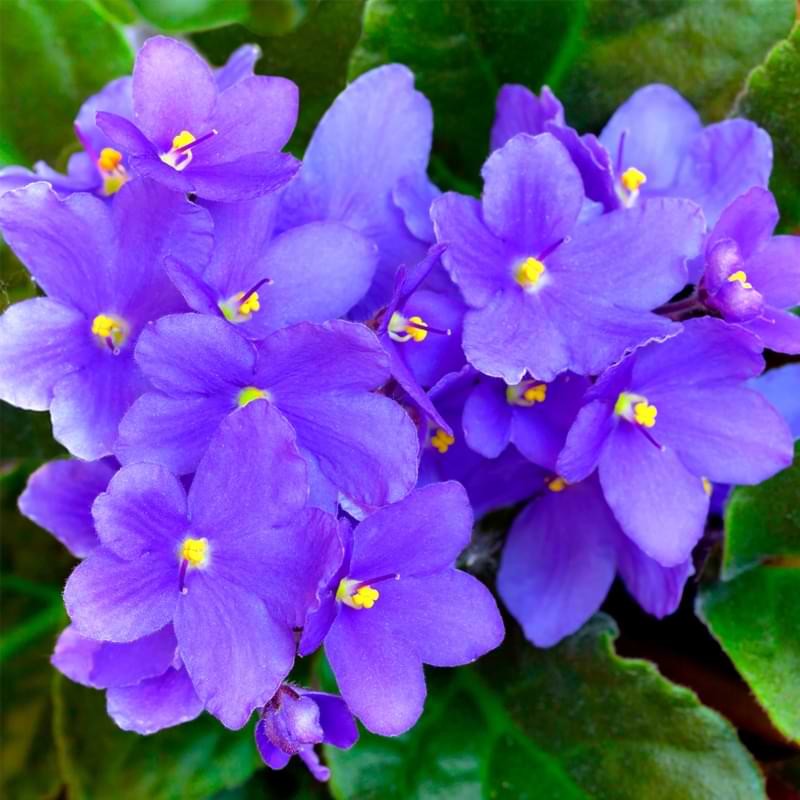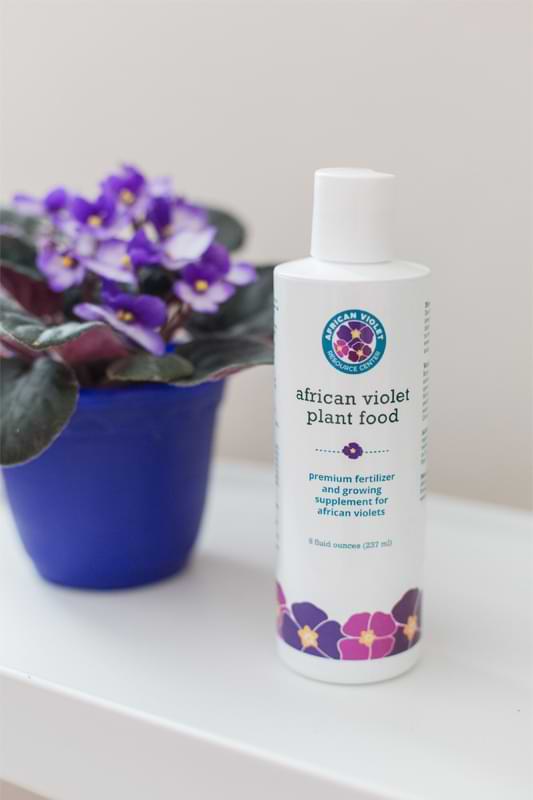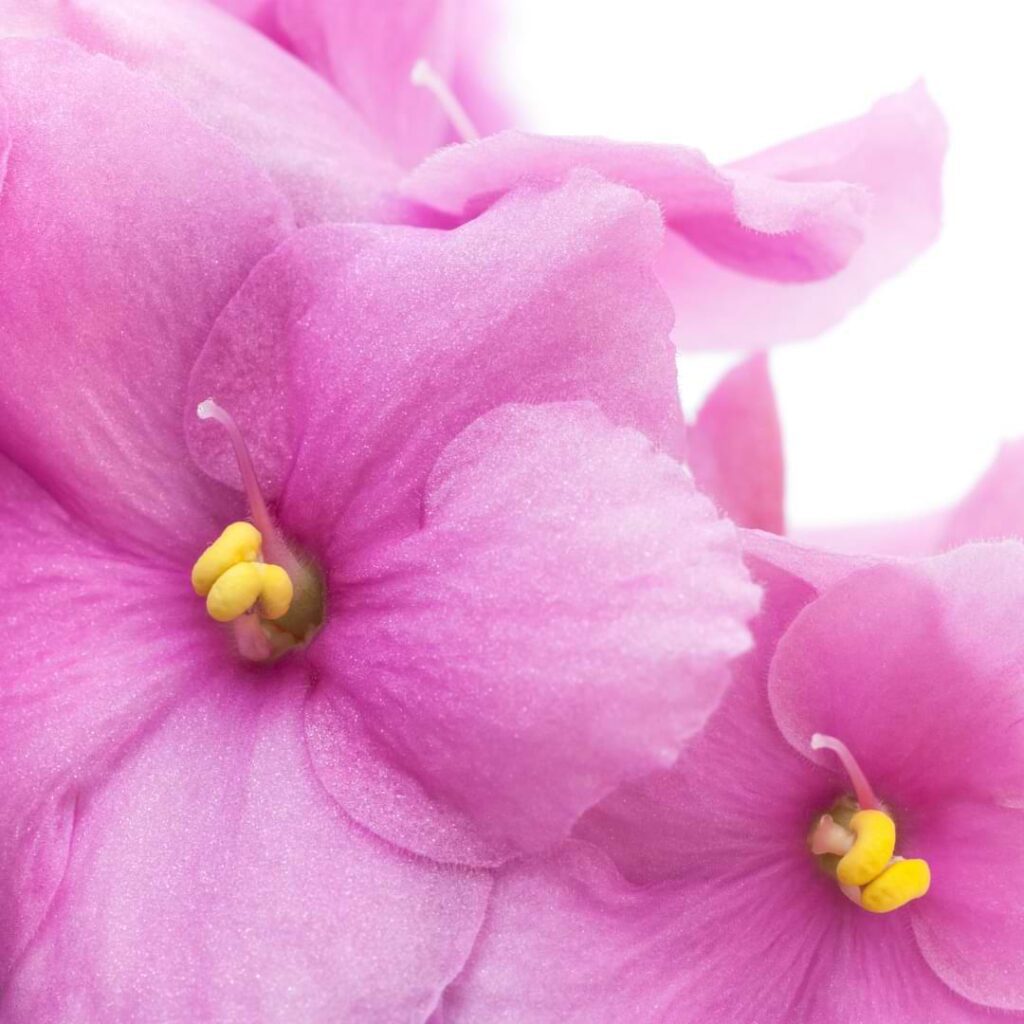In the proper conditions, an African violet can live upwards of 50 years. Well-loved for its vibrant blooms, this tropical beauty can brighten a space year-round if it receives the right care; but its fussy reputation can scare off novice growers.
Luckily, it’s really not all that hard to keep an African Violet alive and enjoy its beautiful blooms year-round. You just need to understand a few quirky characteristics. Regardless, you might be wondering, “Is it worth the extra work to keep an African violet alive?”
Well, we certainly think so! Let’s take a look at what makes these beautiful flowers so worth it.
What’s So Great About African Violets?
- Year-round beauty: Unlike most blooming houseplants, African violets can produce vibrant flowers all year long. This is particularly appealing to anyone who wants a bright solution to the winter blues.
- Diverse colors: Naturally, when we think of violets, we think of purple. African violets, however, have been enthusiastically bred by herbologists to produce a range of colors, from pink to white and even blue!
- Low-light friendly: The shy African violet thrives where other plants might shrivel. Averse to direct sunlight, this plant is happiest farther away from the window, making it a perfect choice to brighten up your shelves or dining room table.
- Want more? Visit our post 7 Reasons You Need an African Violet Houseplant Now for a whole list of benefits
African Violet History
The very first documentation of the African Violet plant was in 1892 in Tanzania. The discovery was made by a German colonial official who loved to travel and collect plants, and ended up collecting the seeds from the African Violet he found, and later sent them to his father in Germany, where the plant was given its name and shared with many other plant lovers.
The first documentation of the African Violet arriving in the US was shortly after this in 1894 by a New York florist, but they did not survive very long because of the frigid temperatures. Once fluorescent bulbs became readily available, though, these beautiful plants were once again able to bring light and beauty to people in the United States, and have since grown in popularity so much that there is now an African Violet Society of America.
African Violet Varieties and Characteristics
There are so many different varieties of African Violets that there is bound to be one that would make every single plant enthusiast happy. From miniature African Violets, to standard and large ones, even different colors ranging from blue to purple, pink, and white!
Since there is such a wide range of sizes, use this guide to help sift through the many different types of African Violets to see if there’s a size out there that would be perfect for your home!
Most varieties share most of the same characteristics, including the delicate flowers and strong leaf system, with shorter stems. Blooms can either be straight or curly, with a single layer of flower petals or a double-bloom, which has two layers of petals, one on top of the other.
The most common African Violet varieties are:
- Blue Boy
- Viking
- Admiral
- Persian Prince
They’re not too picky of a plant to care for, either. As long as their basic needs are met, they’ll continue to grow and bloom for many years.


African Violet Care Guide
Although African violet care is a little different than most other houseplants, they are not hard to please. Master the key elements of potting, light, water, and temperature, and you’ll have a happy plant pal for years to come!
Potting Mix
Hailing from rocky outcrops in the Tanzanian jungle, this houseplant is poorly suited for traditional potting soil. You need a loose and well-aerated specialty mix to keep your African violet alive. Our guide to African violet potting mix digs into everything you need to know to select or make your own.
Pot Size
Keeping your plant slightly root-bound encourages it to bloom. Your African violet will be happiest in a container that is just a little too small for other similarly sized plants. Repot annually to introduce fresh soil and accommodate growth.


Fertilizer
Your plant absorbs nutrients from the soil to fuel new growth. Replenishing these nutrients with fertilizer is an important part of keeping your African violet alive. We recommend using a gentle, urea-free liquid fertilizer every time you water. This method provides your plant a steady dose of food without the risk of burning or overfeeding.
Light Requirements
Plants use light to power photosynthesis, the process which turns carbon, oxygen, and hydrogen into useful energy. African violets, however, are sensitive to direct sunlight. Too much exposure will cause your plant to spot or shrivel.
Place your African violet in moderate to bright indirect sunlight for a happy houseplant. If you live in a region with shorter days for part of the year, move closer to a window during the cooler months. (But keep it warm!)
Houseplant Pro-Tip: Rotate your plant ¼ every time you water to promote even light exposure and growth.
Watering
Watering is probably the most notorious African violet quirk. The plant’s sensitive leaves will develop white spots or start to rot if exposed to light while wet. This, combined with a vulnerability to over-watering, leads most plant parents to adopt a bottom-watering approach.
Bottom watering requires a special two-piece planter. Your African violet stays alive by regulating its own water uptake through its pot’s drainage holes. This spares its sensitive leaves and prevents over-watering.
Our guide to African violet watering digs into bottom watering and a few other popular methods.
Temperature
African violets make great house plants because they, like us, like to be comfortable. The best temperature to keep your African violet alive is a pleasant 70 degrees. If you’re one of “those people” and prefer your house on the chilly side, keep your plant a little closer to the window. This will help it capture more of the sun’s thermal energy (just remember, avoid direct sunlight!).
Cold is a much bigger threat to your plant than heat. If your space is too cool (beneath 65 degrees Fahrenheit) your plant will get moody. In these conditions, your plant will not bloom and its growth will slow to a snail’s pace.
What Do I Do If My African Violet Was Exposed to the Cold?
If you’ve accidentally left your plant outdoors, or somewhere chilly, immediately move it to a warmer place. Cut or pinch any pieces that have begun to rot or die. If your plant is looking particularly bedraggled, you can create a containerized greenhouse by wrapping it in a plastic bag.
Encouraging African Violet Blooms
Year-round blooms are a big part of the African violet’s mass appeal. Not only will the care mentioned above keep your African violet alive, but it will also create the ideal conditions for your plant to flower.
Once you’re certain you’ve created the ideal environment for your plant, you can encourage it to bloom brighter by “deadheading” or pinching off wilted booms and other stressed parts of the plant. This frees up more energy to put toward creating beautiful blooms!
Visit our post about indoor African violet gardens to learn more about growing a garden that blooms all year long.
Propagating African Violets
Many people consider African Violets one of the easier plants to propagate, mainly because you don’t have to take cuttings from this plant in order to have a successful propagation. If your African Violet has grown an extra crown alongside the main crown, you can very easily separate the crowns to plant the baby crown in its own pot, and your propagation is complete! For a step-by-step guide on how to do this, read our African Violet Division post.
You can also grow a new African Violet plant by seed also, and this is a very similar process to germinating any plant seed. To read more about what that process looks like, check out this African Violet seed growing guide!
Possible African Violet Problems
African Violets are susceptible to several problems from root rot, to disease or pest infestation, and even crown problems.
Root Rot: If your African Violets leaves are wilting or yellowing out of nowhere, it could be because of root rot. It’s a pretty common issue with African Violets since they are rather sensitive to being over-watered. The only way to know for sure if the problem is root rot is to inspect the roots. If they are mushy and brown, then you know for sure it is root rot that is affecting your plant, and you should act quickly. Repotting isn’t always necessary in this situation, but it could help stop the problem quickly.
Disease and Pest Problems: There are several pests that may want to call your African Violet home because of the tight leaf pattern, making it an ideal environment for many types of pests. Unfortunately, it also makes the African Violet a great breeding ground for diseases, too.Keep an eye out for diseases like blight and powdery mildew, as well as pests like mealy bugs, scale, spider mites, and fungus gnats. For more information about possible diseases and pests that may affect your African Violet, read this guide.
Crown Problems: Since the African Violet has a tighter crown than some other houseplants, it is more likely to encounter some crown issues. The most common crown problem is crown rot, and luckily it’s a problem that you can fix with some high-quality plant care. Some other problems include a tight crown and a distorted crown shape. Read more about these problems, how to fix them, and how to prevent them here!
Join the African Violet Club!
Whether you’re just starting out or are a seasoned grower, African Violet Resource Center has everything you need to help your plant grow vibrant and strong. Explore our other articles, visit our online shop, and connect with other houseplant lovers in our Facebook group to learn everything you need to know about this rewarding hobby!





